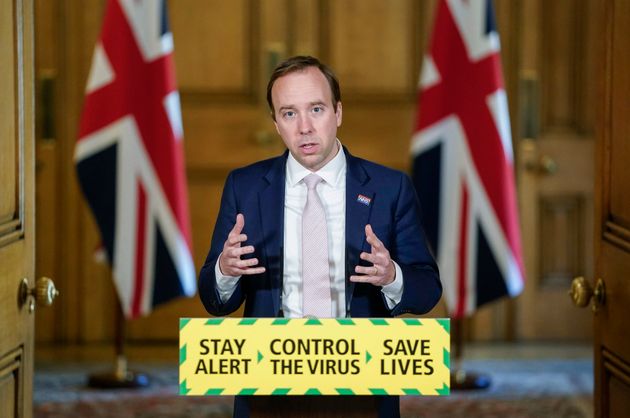Coronavirus has changed everything. Make sense of it all with the Waugh Zone, our evening politics briefing. Sign up now.
More than 200 new city-centre coronavirus testing centres are to be set up by the government in a bid to ensure everyone in urban areas is within a 30-minute walk of a test.
The fresh “ambition” set by NHS Test and Trace will be allied to Boris Johnson’s latest target of increasing testing capacity to half a million tests per day by the end of October.
At present just 15 walk-in centres exist, but the mass expansion will be part of a plan to ensure the UK is prepared for a possible second spike of Covid-19 this winter, along with the seasonal flu outbreaks.
“At least a couple of hundred” new walk-in centres are planned to be created between now and the end of October.
The new aim of ensuring every city and town dweller is within half an hour’s walk of a test by October 31 will be accompanied by a separate target to ensure those in rural areas are also 30 minutes by car from a testing centre.
Most of the walk-in centres have shown a rapid turnaround time for results that far exceeds that of home testing kits, and are seen as more convenient for vulnerable and poorer citizens who don’t have a car.
Each of the centres, which will be accessible by foot or by cycle and will be Covid-secure, will have the capacity to test hundreds of people in one day.
Home testing won’t be scrapped, but it is expected to mainly service those patients waiting for negative Covid tests before going to hospital for routine operations.
A new “Lighthouse Laboratory” in Newport was also unveiled by the NHS as part of the drive to ramp up its testing capacity.
The new moves came as NHS Test and Trace posted its best figures since its creation six weeks ago.
The latest figures for the week between July 9 and July 15 showed that of the 3,887 people who had their positive Covid case transferred to the contact tracing system, 3,098 (79.7%) were reached and asked to provide details of close contacts.

And of the 16,742 people identified as coming into close contact with someone who has tested positive, 13,034 people (77.9%) were reached and asked to self-isolate – an increase from 72.0% the previous week.
Both figures are now close to the 80% contacts that the government’s Sage committee of scientific advisers recommended as being crucial to make the whole system viable.
However, the average figures nationwide mask some concerning low rates of contacts in some of the poorest areas of England, including Blackburn which now has the highest per capita cases of coronavirus. Just around 50% of local contacts in the Lancashire town are being reached.
HuffPost UK understands that the government is looking at what extra financial help can be given to workers who fear that self-isolating for a fortnight would hit them in the pocket.
Australia’s Victoria state announced overnight that workers who cannot afford to take time off while waiting for a Covid-19 test result will now be eligible for an AU$300 (US$215) hardship payment. The payment will be for those who cannot access sick pay.
In the UK, millions of workers are ineligible for statutory sick pay, which is set at around £95 a week – a level that health secretary Matt Hancock has admitted he could not live on.
Problems with the NHS Test and Trace continue on test turnaround times.
The proportion of people receiving their Covid-19 result within 24 hours of being tested at a regional site or mobile testing unit – a so-called “in-person” test – fell for the second week in a row.
Some 71.4% of people received the result within 24 hours in the week ending July 15, down from 87.7% in the week to July 8 and 90.7% in the week to July 1.
Boris Johnson last month pledged to get the results of all in-person tests back within 24 hours by the end of June.